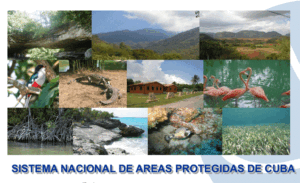During a meeting in this capital with specialists from the National Center for Protected Areas (CNAP), the head of Planning, Augusto Martínez explained that 733 human settlements with almost a million people are scattered in the system, 650 of these are coastal communities.
At the meeting, the experts agreed that it is important to work with the residents of these areas, because theory is worthless, investing resources, if first the fundamental actors are not made aware.
Yunaika Álvarez, coordinator of the CNAP Knowledge Management Group, pointed out that the work with the communities is part of the strategic lines, which is carried out by the administrators and experts of the protected areas, who have direct contact with the citizens.
This topic is punctual in our national and international projections, hence the importance of the diagnosis and the characterization of these settlements to know their needs, said Álvarez.
Other experts present agreed that it is impossible to address the issue of sustainability without working with the communities, because only in this way can we pressure on ecosystems to be reduced.
Inhabitants are the closest to nature, hence they become the driving forces to materialize the various environmental projects, commented the specialists.
They also agreed that the sustainability of ideas and methodology is necessary, and that all this wealth of knowledge transcends future generations.
The meeting takes place on the 92nd anniversary of the declaration of Sierra Cristal as a protected area, the first in Cuba.
This site is one of the great mountains of Cuba, which rises in the northeast of the province of Holguín, in the east of the Caribbean country.
A government decree of April 12, 1930 approved the category of National Park, then in the municipalities of Mayarí and Sagua de Tánamo, for its forest reserve, value of wood and degree of forest conservation.
The culminating point of this massif is Pico Cristal, with a height of 1,231 meters above sea level, an orographic accident that receives its name from the abundant quartz found on its steep slopes in Holguín, more than 700 kilometers east of Havana.
The region is covered by pine tree forests, and even represents the only pre-Columbian habitat in Cuba, with unique species, as the Pinus Caribaea, which can reach heights of up to 30 meters.
ef/rgh/joe









